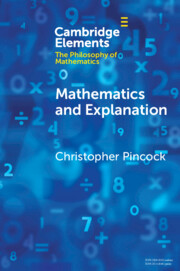Element contents
Mathematics and Explanation
Published online by Cambridge University Press: 27 April 2023
Summary
- Type
- Element
- Information
- Online ISBN: 9781009039154Publisher: Cambridge University PressPrint publication: 25 May 2023
References
- 8
- Cited by



